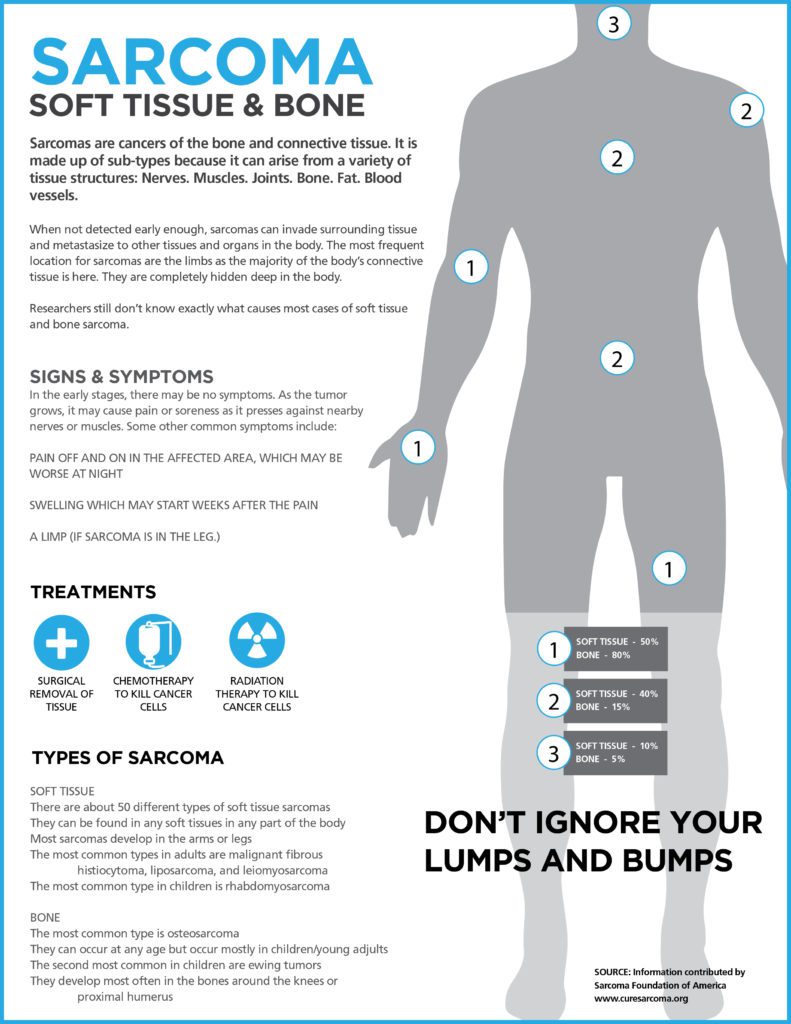July is Sarcoma Cancer Awareness Month
Sarcomas are a rare group of cancers in which malignant cells form in the bones or soft tissues of the body.
More than 13,000 cases of soft tissue sarcoma and approximately 3,600 cases of bone sarcoma are expected to be diagnosed in the United States, according to data from the National Cancer Institute’s Surveillance, Epidemiology, and End Results Program (SEER). Some 5,350 and 1,720 people are expected to die from soft tissue and bone sarcomas, respectively. The five-year survival rate for soft tissue sarcomas is 64.7 percent, while the survival rate is 66.0 percent for bone sarcomas.
What is Sarcoma Cancer?
However, sarcoma is still considered to be the “forgotten cancer.” Efforts to encourage research and drug development are made more challenging due to a lack of awareness and understanding. Sarcoma affects more than 50,000 Americans and the families and friends who are by their side. It can touch lives no matter what age and at any location on the body.
Risk Factors
Unfortunately, scientists do not fully understand why some people develop sarcomas while the vast majority do not. However, by identifying common characteristics in groups with unusually high occurrence rates, researchers have been able to single out some indicators that may play a role in causing sarcomas.
Inherited syndromes.
Chronic swelling (lymphedema).
Radiation therapy for cancer.
Exposure to chemicals.
Exposure to viruses.
Sarcoma Overview Infographic
This infographic, provided by the Sarcoma Foundation of America, is a great infographic that summarizes what sarcoma really is.


